Results 2,211 to 2,220 of 12096
Thread: Anandtech News
-
09-12-12, 01:00 PM #2211
Anandtech: Apple's iPhone 5 Uses A6 SoC: ARM Cortex A15s Inside
This one caught us off guard, but Apple just announced the A6 SoC powering the new iPhone 5 features 2x faster CPU and GPU performance compared to the iPhone 4S. Apple reserves major Ax SoC number iterations for architecture changes, combine that with the performance claims as well as some other stuff we've heard offline and there's one conclusion: the iPhone 5 uses ARM Cortex A15 cores inside.
Our guess is two cores. No word on the GPU yet.
The A6 is 22% smaller than the A5, although it's not clear if that's a package or die size claim yet. There's a good chance this is built on Samsung's 32nm LP HK+MG process.

More...
-
09-12-12, 01:00 PM #2212
Anandtech: Haswell: Up to 128MB On-Package Cache, ULV GPU Performance Estimates
Intel was surprisingly quiet about the remaining details of Haswell at IDF this year. We know the rough CPU architecture details, some info at a high level about the GPU and of course the platform power improvements. There is a lot more however.
We already know that in its quad-core GT3 configuration, Haswell will offer 2x the GPU performance of Intel's HD 4000 (Ivy Bridge GT4). What Intel didn't say however is that Haswell's ULV GT3 parts will offer around 30% better GPU performance than Ivy Bridge ULV GT2.
The improved graphics performance comes both from an updated architecture and more EUs, but also an optional on-package cache of up to 128MB in size. It's too early to talk about SKUs and DRAM configurations, but 128MB is the upper bound. Expect to see tons of bandwidth available to this cache as well.
On the CPU side you can expect a ~10% increase in performance on average over Ivy Bridge. As always we'll see a range of performance gains, some benchmarks will show less and others will show more. 

More...
-
09-12-12, 03:00 PM #2213
Anandtech: iPhone 5 Hands On Pics and Video
We just spent a good amount of time with the iPhone 5. The phone feels very thin and light (obviously), and the improvement in performance is very noticeable compared to the 4S. Apple didn't have any games (and obviously no benchmarks) preloaded on the iPhone 5 demo units so we'll have to wait until launch to really quantify performance.
The display does look noticeably better than the 4S and the extension of the screen height seems natural. We'll be posting more detailed impressions later on, but for now enjoy the photos/video below:

More...
-
09-12-12, 03:00 PM #2214
Anandtech: Apple iPhone 5: Announced
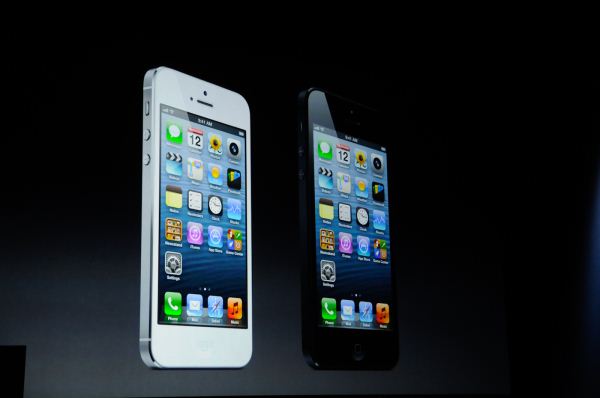
Apple announced its 6th generation iPhone, the iPhone 5, at a special event in San Francisco this morning. The iPhone 5 brings a huge list of improvements. Apple unexpectedly used the iPhone 5 to introduce its next-generation SoC: the A6.
Apple didn't say anything about core counts and clock speeds, but it did give us a good indication of performance: 2x faster CPU and GPU. Based on the performance gains, Apple's history of SoC naming and some other stuff we've heard recently, it looks like Apple has integrated two ARM Cortex A15 cores on Samsung's 32nm LP HK+MG process. This is a huge deal because it means Apple beat both TI and Samsung on bringing A15s to market.
The GPU side isn't entirely clear at this point, but the 2x gains could be had through a move to 4 PowerVR SGX543 cores up from 2 in the iPhone 4S.
The new SoC is paired with Qualcomm's single-chip 28nm MDM9615 LTE baseband. Apple claims support for EDGE, EV-DO, HSPA, HSPA+, DC-HSDPA and LTE. The WiFi gets updated to dual-band 2.4GHz and 5GHz 802.11a/b/g/n, using 20MHz channels Apple can hit a peak link rate of 150Mbps over WiFi.
The display sees a big upgrade from 3.5-inches to 4-inches diagonally. The new resolution is 1136 x 640, same width but with a taller height (16:9 ratio). Legacy applications will be letterboxed until they are updated to support the added real estate. Within iOS the biggest change will be a fifth row of icons on the home screen; along with added content within apps like the calendar and Mail. 
The camera saw an upgrade in silicon and software, though it seems to be the same optical package as the previous generation. Multiple stills will be integrated for better low light performance, in an all ISP solution. The package has been reduced in size by 25%, it's unclear whether that will have any effect on image quality, though. The software has been updated to included a panorama mode that yields 28MP images. Video performance on the front facing camera gets boosted to 720p and now bears that FaceTime HD moniker, while rear-facing video gets better image stabilization and face detection while shooting. 
The iPhone 5 includes three mics, including support for beam forming. The ear piece also now features a noise cancelling feature. As expected there's a new dock connector: the 8-pin Lightning connector. The Lightning connector is reversible and significantly smaller than the previous 30-pin dock connector introduced in 2003. 
Pricing hews to tradition, with configurations starting at 16GB and $199 and adding $100 to the price at each step up in storage (32GB and 64GB). The rest of the lineup shuffles its way down, with the iPhone 3GS being led of stage, and putting the iPhone 4S at $99 and the iPhone 4 gratis, all on contract of course. Preorders start September 14th and will be available in stores September 21st. 
 Physical Comparison   Apple iPhone 4 Apple iPhone 4S Apple iPhone 5 Samsung Galaxy S 3 Height 115.2 mm (4.5") 115.2 mm (4.5") 123.8 mm (4.87") 136.6 mm (5.38") Width 58.6 mm (2.31") 58.6 mm (2.31") 58.6 mm (2.31") 70.6 mm (2.78") Depth 9.3 mm ( 0.37") 9.3 mm ( 0.37") 7.6 mm (0.30") 8.6 mm (0.34") Weight 137 g (4.8 oz) 140 g (4.9 oz) 112 g (3.95 oz) 133 g (4.7 oz) CPU Apple A4 @ ~800MHz Cortex A8 Apple A5 @ ~800MHz Dual Core Cortex A9 Apple A6 (Dual Core Cortex A15?) 1.5 GHz MSM8960 Dual Core Krait GPU PowerVR SGX 535 PowerVR SGX 543MP2 ? Adreno 225 RAM 512MB LPDDR1-400 512MB LPDDR2-800 ? 2GB LPDDR2 NAND 16GB or 32GB integrated 16GB, 32GB or 64GB integrated 16GB, 32GB or 64GB integrated 16GB or 32GB NAND with up to 64GB microSDXC Camera 5MP with LED Flash + Front Facing Camera 8MP with LED Flash + Front Facing Camera 8MP with LED Flash + 720p Front Facing Camera 8 MP with LED flash + 1.9 MP front facing Screen 3.5" 640 x 960 LED backlit LCD 3.5" 640 x 960 LED backlit LCD 4" 1136 x 640 LED backlit LCD 4.8" 1280 x 720 HD Super AMOLED Battery Integrated 5.254Whr Integrated 5.291Whr Integrated ?? Whr Removable 7.98 Whr

More...
-
09-12-12, 03:30 PM #2215
Anandtech: iOS 6 Coming September 19th
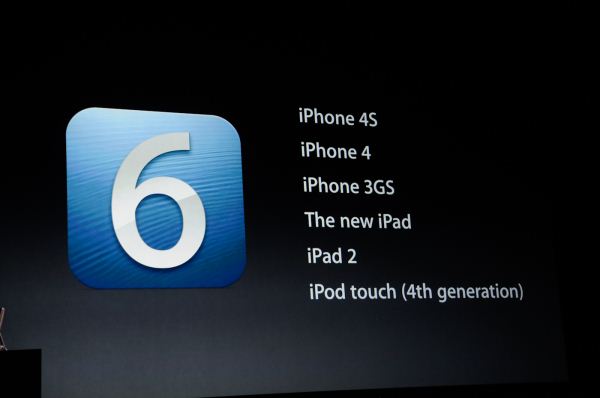
Apple spent quite a bit of time talking up the new features of iOS 6 during their presentation today, though not much was new since WWDC. The software is much more polished than the Beta builds, though that should be no surprise. Apple's own take on Maps is present and tons of content has been added from their various mapping and data partners. Siri has had several feature upgrades, including a new sports scores component, and Safari has seen a few enhancements, including iCloud tabs. 
Developers can download the GM today, the rest of us will have to wait till September 19th to try out the software on many currently available devices. The list was impressively complete and includes the iPhone 3GS, iPhone 4/4S, iPad 2/3 and the iPod Touch (4th Generation). We'll have a complete review of iOS 6 a bit closer to launch, and Brian is downloading the GM right now and may have some impressions a bit later.

More...
-
09-12-12, 03:30 PM #2216
Anandtech: Apple Introduces New 8-pin Dock Connector, Dubs It Lightning
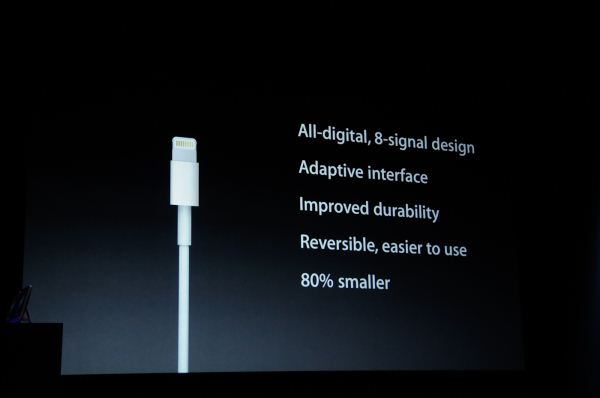
There was little doubt by the start of the event that Apple would be replacing their nearly decade old 30-pin connector. Apple always leaves room for suprises though. The new design features a 9-pin, 8-signal arrangement and is 1/5th the size of its predecessor. An adapter is being introduced so as to not break compatibility with legacy accessories. It's not the most elegant solution but it should be long before new accessories adopt the new connector.
Lightning, as the new connector is called, is described as "all-digital" which that seems more obfuscatory than necessary. The basic conceit of this new connector is that at any point in time, not all the pins of the 30-pin connector were active. So, if a particular use case involved the charging pins and some audio pins, or the charging pins and USB pins, why not design a system that provides just enough pins for any given use case. The iPhone senses what pins are being requested and some on-device signaling sends the necessary bits over the available pins. 
As an added design feature, the connector is reversible, so you'll never fumble with figuring out what way to put it in, as is so common with USB connectors. 
There's much that we still need to dig into with this new connector, but we do know what it is almost surely not. This isn't a faster interface. Rumors of a Thunderbolt connector were always a bit bonkers, and adding USB 3.0 support would have added silicon to the very slim package. Get comfortable with this one guys, because we'll be seeing this connector in all future Apple devices including the new iPods, and, no doubt, the next iteration of the iPad. 

More...
-
09-12-12, 07:00 PM #2217
Anandtech: New iPod Touch Leads Revamped iPod Lineup
It’s been a pretty action-packed day for Apple. While the star of today’s event was undoubtedly the new iPhone 5, the Cupertino giant also gave the iPod lineup an overhaul, announced a thorough redesign for iTunes, and released of the iOS 6.0 Gold Master for developers (we’ll have more information about the iOS 6 GM for you later today). The iPod lineup has been mostly stagnant recently - the last set of updates were in 2010, with the launch of the fourth-generation iPod touch and the touchscreen iPod nano, and since then we’ve only seen minor colour and pricing changes. Given that, it was good to see Apple turn its attention once more to the iPod side of things. 
Fifth-generation iPod touch

The fifth-generation iPod touch is thinner and lighter than the outgoing touch and has many of the new features that the iPhone 5 has, including the new 4” 1136x640 Retina panel. It’s 6.1mm thick, weighs 88 grams, and has a new anodized aluminum chassis. If you hated the chromed aluminum backs and how scratch-prone they were, Apple has finally listened. The industrial design has changed, with a much more rectangular profile than the previous iPod touch, so it looks pretty similar to the new iPhone. The plastic antenna window returns on the back of the new touch, adjacent to the camera. The new touch is available in five colours - black, silver, blue, pink, and yellow. The black has a black bezel, while the rest have a white bezel. 

The internals have gotten a considerable upgrade, going from the 1GHz A4 to a dual-core A5. It’s likely the updated 32nm A5 (generally referred to as the A5r2) found in the iPad 2,4, with two Cortex A9 cores and PowerVR’s SGX543MP2 GPU. It doesn’t push boundaries the same way the A6 does, but the A5r2 is still a pretty robust chip. 
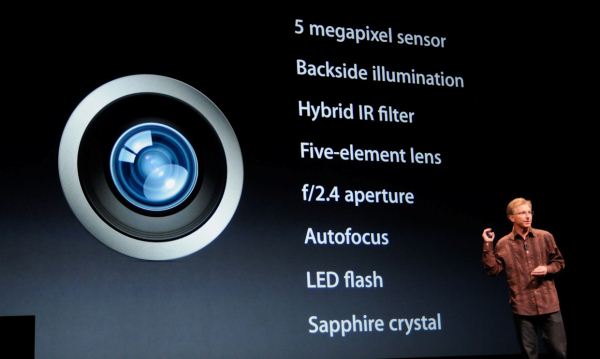
The camera has also seen significant improvements, with a 5MP backside illuminated sensor (probably the same CMOS as the iPhone 4 and 2012 iPad) and an optical system similar to what is used on the iPhone 5. Like the 5, there’s a five element lens element with an f/2.4 aperture, along with a sapphire crystal on the front vertex of the camera system to make it resistant to scratches. The touch also brings the iPhone 5’s Panorama mode and the new backside illuminated 720p FaceTime HD front facing camera with face detection. There’s also an LED flash, tap to focus, and support for iPhoto and iMovie. The rear camera supports 1080p video recording and has video image stabilization along with face detection. Also interesting here is that there’s a button on the back of the touch that pops up and allows you to attach a looped wrist strap. Given that ergonomic detail, as well as the significant upgrades to the camera, it’s clear that Apple is positioning the new touch as a point and shoot replacement.
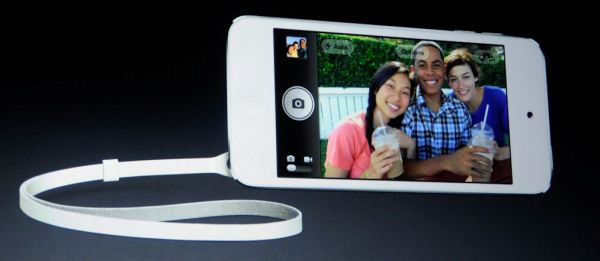 The 30pin dock connector has been phased out in favour of the new Lightning connector as with the rest of the new devices, and the ports on the bottom have been reordered, but other than that the ergonomics appear to be mostly the same. Battery life has been improved to 40 hours for music (a claim that will be difficult to test) and 8 hours for video. The touch is up for preorder as of this Friday at prices of $299/399 for the 32/64GB variants, and is expected to ship sometime in October. 
The 30pin dock connector has been phased out in favour of the new Lightning connector as with the rest of the new devices, and the ports on the bottom have been reordered, but other than that the ergonomics appear to be mostly the same. Battery life has been improved to 40 hours for music (a claim that will be difficult to test) and 8 hours for video. The touch is up for preorder as of this Friday at prices of $299/399 for the 32/64GB variants, and is expected to ship sometime in October. 
Seventh-generation iPod nanoPhysical Comparison   Apple iPod touch (5G) Apple iPod touch (4G) Apple iPhone 4S Apple iPhone 5 Height 123.4mm (4.86") 111.0 mm (4.4") 115.2 mm (4.5") 123.8 mm (4.87") Width 58.6mm (2.31") 58.9 mm (2.32") 58.6 mm (2.31") 58.6 mm (2.31") Depth 6.1mm (0.24") 7.2 mm ( 0.28") 9.3 mm ( 0.37") 7.6 mm (0.30") Weight 88 g (3.1 oz) 101 g (3.56 oz) 140 g (4.9 oz) 112 g (3.95 oz) CPU Apple A5r2 - 32nm Dual Core Cortex A9 Apple A4 @ ~800MHz Cortex A8 Apple A5 @ ~800MHz Dual Core Cortex A9 Apple A6 (Dual Core Cortex A15?) GPU PowerVR SGX 543MP2 PowerVR SGX 535 PowerVR SGX 543MP2 ? RAM ? 512MB LPDDR1-400 512MB LPDDR2-800 ? NAND 32GB or 64GB integrated 8GB, 16GB, 32GB or 64GB integrated 16GB, 32GB or 64GB integrated 16GB, 32GB or 64GB integrated Camera 5MP with LED Flash + 720p Front Facing Camera 0.7MP + VGA Front Facing Camera 8MP with LED Flash + Front Facing Camera 8MP with LED Flash + 720p Front Facing Camera Screen 4" 1136 x 640 LED backlit LCD 3.5" 640 x 960 LED backlit LCD 3.5" 640 x 960 LED backlit LCD 4" 1136 x 640 LED backlit LCD Battery Integrated ?? Whr Integrated 5.254Whr Integrated 5.291Whr Integrated ?? Whr
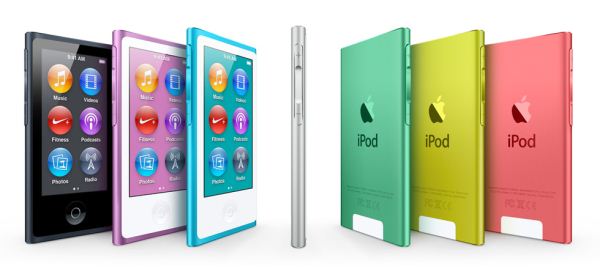
The nano is entering its seventh generation, and the ground up redesign sees it become the mini-iPod touch that it was once expected to be. While the last generation nano was the ultimate iPod shuffle (the sixth generation nano and fourth generation shuffle were very similar in size, shape, and general form factor), the new one goes in a completely different direction. It has a 2.5” 16:9 touchscreen with a resolution of 432x240, along with a home button underneath the screen. The form factor is completely different, with a narrow rectangular body shape reminiscent of the fourth and fifth generation nanos, though with design language along the same lines as the newer nanos and shuffles (which, in turn, were similar to the second generation nano and shuffle from 2006.) This is the thinnest nano to date, at just 5.43mm, and will be available in eight colours - black, silver, blue, green, purple, pink, yellow, and Product(RED).
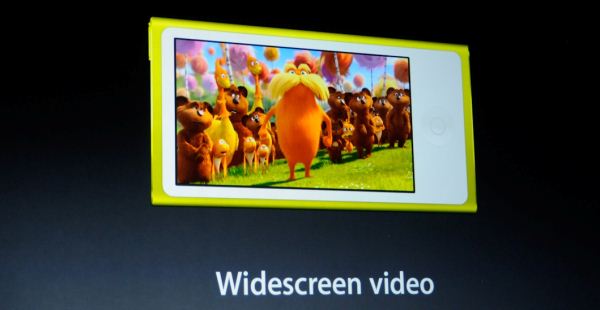
The nano is a focused portable media player, and the feature list reflects that. It supports the standard music and video codecs, as well as 720p video playback, and contains an FM radio, a Bluetooth radio, and Nike+ built in. It doesn’t explicitly run iOS, but the interface will be very familiar to anyone who has ever used an Apple touchscreen device. The battery is rated at 30 hours for music and 3.5 hours for video. The new nano has exactly one storage configuration - 16GB - that costs $149. Availability is similar to the touch, with preorders going up on Friday and a shipping date of sometime in October. 

The shuffle is essentially the same as before, except with new colours to match the new touch and nano. The new colours are available starting today. The 160GB iPod classic soldiers on unchanged with the same chassis it has had since 2007. Think about that - five years with no significant changes. That’s pretty impressive. I’m assuming that it lives on through next year and is euthanized whenever Apple starts shipping devices with 128GB of NAND onboard.

More...
-
09-13-12, 01:30 AM #2218
Anandtech: Hands on with iPod Touch 5th Gen, iPod Nano 7th Gen, and EarPods
After this morning's Apple event, I've been a constant state of motion. I had the opportunity to finish the iPhone 5 hands on, but there were three other devices of note from today's Apple announcement. The first is the new iPod Touch 5th Gen, next is the iPod Nano 7th Gen, and finally there are Apple's new stock earbuds which they've dubbed EarPods. 
iPod Touch 5th Gen
Though we were a bit conservative with our iPhone 5 silicon predictions and ended up being off the mark by fingering A5R2 as the most likely candidate, what does get an A5 or A5-derivative SoC is the iPod Touch 5th Gen. This is most likely again the 32nm HK-MG SoC we've seen in the iPad2,4 and Apple TV 3rd Generation. The iPod Touch 5th gen gets a suite of improvements in this refresh, including the same 720p front facing camera as the iPhone 5, and for the first time a decent rear facing camera. The rear facing camera is a combination of the new optical system from the iPhone 5 and a 5 MP CMOS sensor which likely is the same as what was in the iPhone 4. 
What's really great about the 5th Gen iPod Touch is its construction. The entire device is a single piece of anodized aluminum, and save a small plastic cutout at the top which serves as an RF window for 2.4 and 5 GHz WiFi and Bluetooth, it's an unbroken aluminum shell. The device is also very thin, and feels great in the hand. The only unfortunate bit is that the rear facing camera sticks out of the assembly by about a good 1 mm or so, which seems odd. The new iPod Touch will come in a suite of colors, though interestingly enough the front glass plate color is white on every model. 
Gallery: iPod Touch 5th Gen Gallery





At the bottom left is a new pop out loop for adding a hand strap, and each iPod Touch will bundle a matching color strap in the box. The circular mount clicks into place, leaving the backside flush if users opt to not use the strap. 
In addition, the iPod Touch 5th gen uses the same exact display and display assembly as the iPhone 5. That includes the nearly 100% sRGB coverage, in-cell touch, and 1136x640 resolution. Apple is clearly leveraging an economy of scale between the iPhone 5 and this generation of iPod to make that display affordable. 
The new iPod Touch also includes the same dual band (2.4 and 5 GHz) single spatial stream WiFi with support for 40MHz channels on 5 GHz. This is no doubt the same BCM4334 as in the iPhone 5. The new iPod Touch also includes support for the new Lightning dock port.
For Apple, refreshing the iPod Touch with newer silicon is important to keep as close to parity with the highest end development target as possible. The previous iPod Touch was starting to get a bit old with the A4 SoC, and moving to the 32nm version of the A5 has helped things a lot. While playing around with the iPod Touch 5th Gen I didn't find the interface laggy at all, though in taxing things like Maps with 3D buildings it was different from the iPhone 5.
iPod Nano 7th Generation
If there's one product in Apple's lineup that has seen constant change and design revisions, it's the iPod Nano, and the 7th generation is no exception. This revision is dramatically changed from the previous generation, and includes a 240x432 resolution 16:9 display with support for video playback. In addition, the display includes full multi-touch support for zooming into stored photos.
The new iPod Nano also includes Bluetooth with support for A2DP, which is a welcome addition considering the number of A2DP headsets popping up or use with a car stereo. There's also FM with support for pausing and resuming playback, so there's clearly some local buffering being done. 
The device is also completely anodized aluminum save a small RF window at the very bottom, and like the iPod Touch will come in a variety of colors. The iPod Nano comes in only one storage configuration at 16 GB. 
Gallery: iPod Nano 7th Generation





EarPodsThe third Music-related refresh we saw today were Apple's new bundled earbuds, which they've named EarPods. These will ship with all of the refreshed iDevices in place of the previous generation of earbuds. Apple claims it has 3D scanned and computationally analyzed many ears to determine the optimal size and form factor for this new generation, and the new earbuds have a total of four apertures for producing sound. Interestingly enough there seems to be something to this, as covering an outside aperture with my finger does change sound noticeably.The new EarPods also include the standard microphone and volume / select button controller on the right earpiece cord. Functionally, the EarPods are identical to the previous generation of earbuds, all that's different is improved acoustical performance and a computationally optimized fit for more of the population.On the way to the demo room, all press was handed a set of EarPods, and they're also on sale now for $29.00 if you're dying to give them a shot. I tried the EarPods in place of my normal in-ears on my flight back, during time spent waiting in the terminal, and after I got home. Turns out they're surprisingly decent.In the past I pretty much completely disregarded the supplied earphones bundled with iDevices, outside of their occasional utility thanks to the in-line microphone for long conference calls where holding the phone to your face gets fatiguing. I whipped out a pair of the previous generation bundled earbuds and compared a few songs, and the new earbuds indeed fit more comfortably in my ear canal and have noticeably better mids and bass. The previous generation sounds comparatively lifeless and tinny, whereas the new EarPods have a notably richer sound. It still isn't what I've come to expect from my in-ears, and isolation isn't a whole lot better, but for stock kit they're not bad at all. The supplied microphone also works well. In-ear fit is much more comfortable, as the previous generation's completely circular shape was like shoving a round peg in the idiomatic square hole that is my ear canal. The new ones as of a few hours of wearing haven't caused the same fatigue as I remember the originals resulting in.  

More...
-
09-13-12, 08:30 AM #2219
Anandtech: The NVIDIA GeForce GTX 660 Review: GK106 Fills Out The Kepler Family
It's been nearly 6 months since the launch of the first Kepler GPUs, and due to 28nm production difficulties NVIDIA has spent the last 6 months with a sizable hole in their video card lineup between their high-end and budget cards. Since the launch of the GTX 680 in March, NVIDIA has launched the GTX 670 and much more recently the GTX 660 Ti to help close that gap, but they have still been in need of a true midrange GPU for mainstream cards. Today that hole is filling being filled, as NVIDIA is ready to launch the 3rd and final consumer Kepler GPU for the year. With GK104 at the high-end and GK107 at the low-end, the task of filling out the middle will fall to NVIDIA’s latest GPU: GK106.
As given away by the model number, GK106 is designed to fit in between GK104 and GK107. GK106 offers a more modest collection of functional blocks in exchange for a smaller die size and lower power consumption, making it a perfect fit for NVIDIA’s mainstream desktop products. GK106’s launch vehicle will be the GeForce GTX 660, the central member of NVIDIA’s mainstream video card lineup. GTX 660 is designed to come in between GTX 660 Ti and GTX 650 (also launching today), bringing Kepler and its improved performance down to the same $230 price range that the GTX 460 launched at nearly two years ago. NVIDIA has had a tremendous amount of success with the GTX 560 and GTX 460 families, so they’re looking to maintain this momentum with the GTX 660.

More...
-
09-13-12, 09:00 AM #2220
Anandtech: NVIDIA Launches GeForce GTX 650: GK107 With GDDR5
Alongside today’s launch of the GK106-based GeForce GTX 660, NVIDIA is also launching one other card: the GeForce GTX 650. In a nutshell, the GTX 650 is the long-awaited GDDR5 version of the GeForce GT 640, sporting higher clockspeeds and far more memory bandwidth than its DDR3-crippled predecessor.
The fact that NVIDIA launched a performance-uncompetitive part in the GT 640 back in June was unfortunate, but not unexpected given the fact that NVIDIA was facing an even more serious supply shortage than they are now. By our reckoning NVIDIA didn’t want to introduce a desktop GK107 part that would be in high demand when they needed those GK107 GPUs for their more profitable mobile lineup, hence the need to hold off on a GDDR5 GK107 desktop card until now.  GTX 660 Ti GTX 660 GTX 650 GT 640 Stream Processors 1344 960 384 384 Texture Units 112 80 32 32 ROPs 24 24 16 16 Core Clock 915MHz 980MHz 1058MHz 900MHz Shader Clock N/A N/A N/A N/A Boost Clock 980MHz 1033MHz N/A N/A Memory Clock 6.008GHz GDDR5 6.008GHz GDDR5 5GHz GDDR5 1.782GHz DDR3 Memory Bus Width 192-bit 192-bit 128-bit 128-bit VRAM 2GB 2GB 1GB/2GB 2GB FP64 1/24 FP32 1/24 FP32 1/24 FP32 1/24 FP32 TDP 150W 140W 64W 65W GPU GK104 GK106 GK107 GK107 Transistor Count 3.5B 2.54B 1.3B 1.3B Manufacturing Process TSMC 28nm TSMC 28nm TSMC 28nm TSMC 28nm Launch Price $299 $229 $109 $99
But as the saying goes, it’s better late than never. The GTX 650 should handily outperform the GT 640 in virtually all scenarios, and based on what we’ve seen with past DDR3/GDDR5 cards we wouldn’t be surprised to see gaming performance at least double. Furthermore the GTX 650 is clocked some 158MHz (18%) higher than GT 640, which will only increase those performance gains.
Speaking of performance, one thing that caught our eye was that NVIDIA has set the TDP of the GTX 650 at 64W, 1 watt lower than the TDP of the GT 640. Typically we see GDDR5 cards sport a higher TDP thanks to the memory’s higher power consumption, and this would be further driven up by the fact that the GTX 650 is clocked higher than the GT 640. Given the fuzzy nature of NVIDIA’s TDP ratings it’s almost certain that the GTX 650 will draw more power than the GT 640, but it may end up being a very small difference if these TDP values are anywhere near accurate.
With that said, NVIDIA is equipping the GTX 650 with a 6pin PCIe power connector – strictly speaking it shouldn’t be necessary for stock operation, but since this is a GTX card NVIDIA has professed a concern over power consumption when overclocking. Of course with the already high core clock of the GTX 650 it remains to be seen just how far GTX 650 can be overclocked. At the very least the lack of a boost clock means that overclocking will be a much more straightforward endeavor.
Of course the $64,000 question right now is whether all of this will be enough to make GTX 650 competitive with AMD’s Radeon HD 7770 and 7750, and unfortunately that’s an answer we’re going to have to wait to get. Although both the GTX 650 and GTX 660 are launching today, NVIDIA didn’t want to have the GTX 650 steal the GTX 660’s time in the limelight, so the press was not sampled ahead of time. We’ll be looking at the GTX 650 in the coming week, at which point we should have an answer to that question.
Summer 2012 GPU Pricing Comparison AMD Price NVIDIA Radeon HD 7950 $329     $299 GeForce GTX 660 Ti Radeon HD 7870 $249     $239 GeForce GTX 660 Radeon HD 7850 $199   Radeon HD 7770 $109 GeForce GTX 650 Radeon HD 7750 $99 GeForce GT 640

More...
Thread Information
Users Browsing this Thread
There are currently 11 users browsing this thread. (0 members and 11 guests)




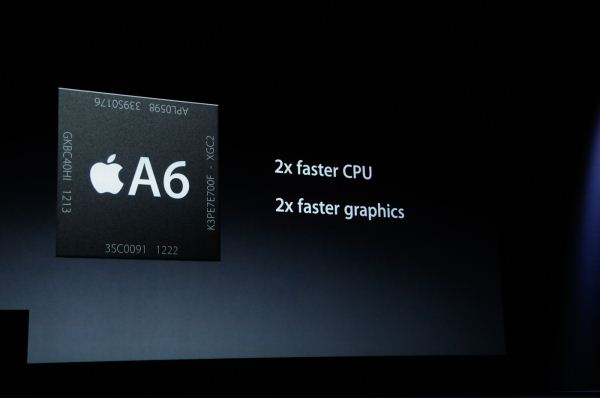
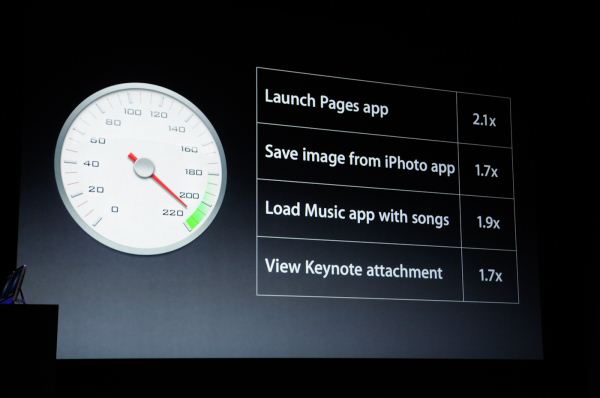



 Quote
Quote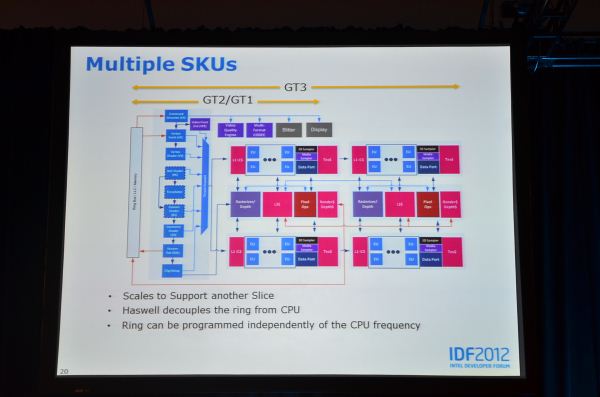
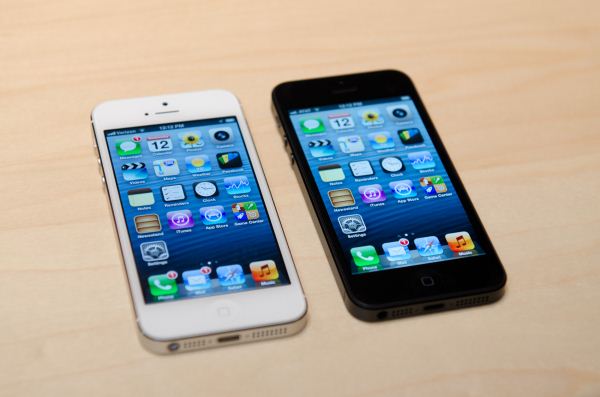






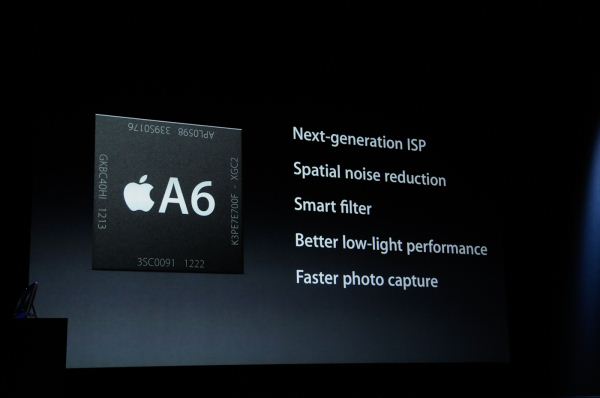
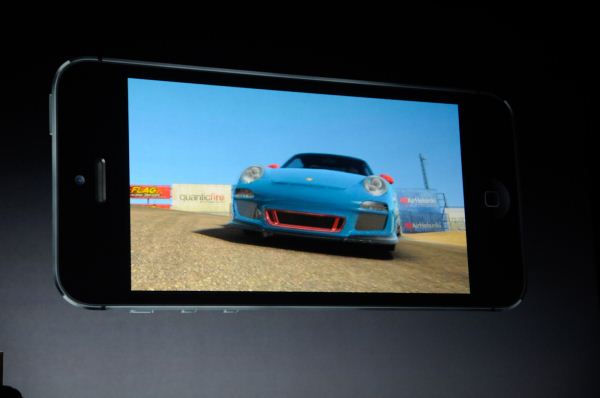
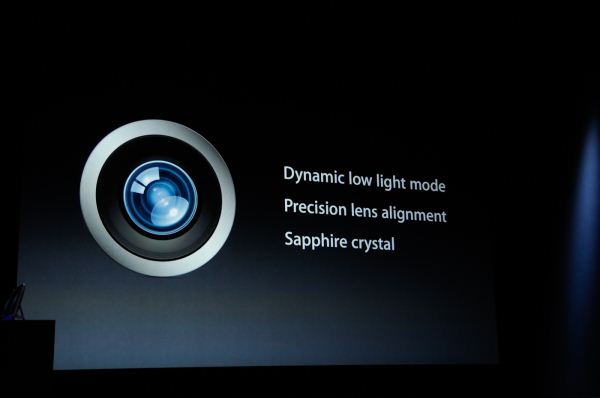
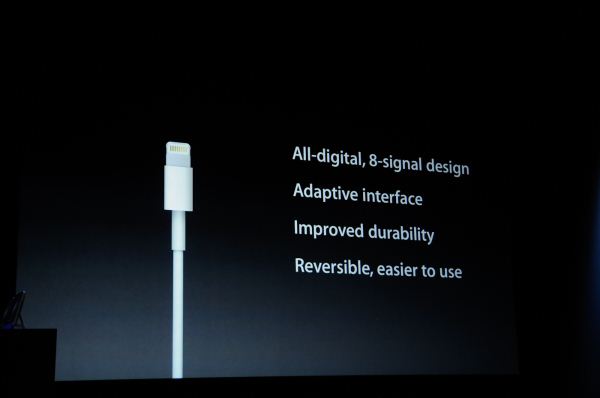




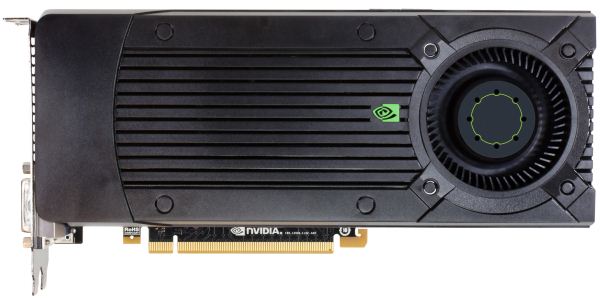

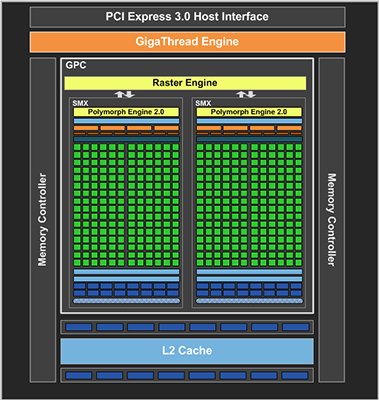
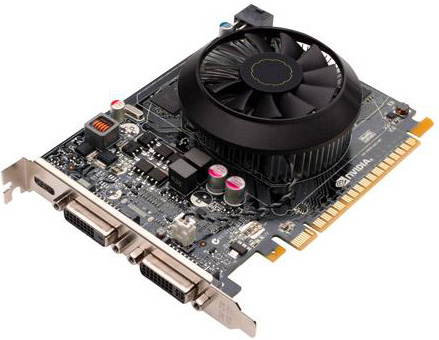

















Bookmarks